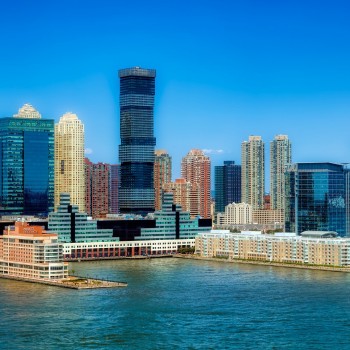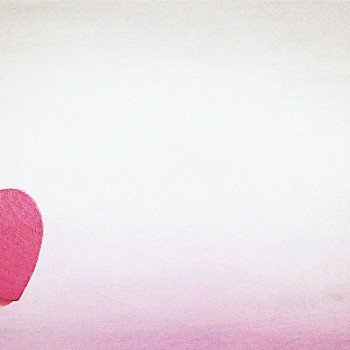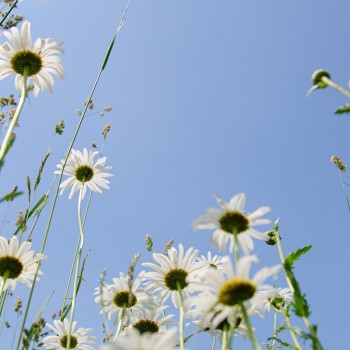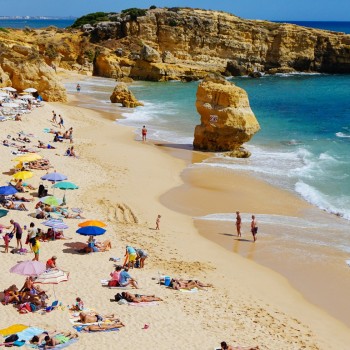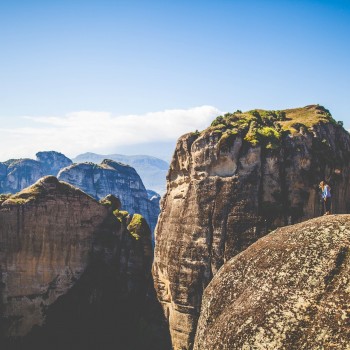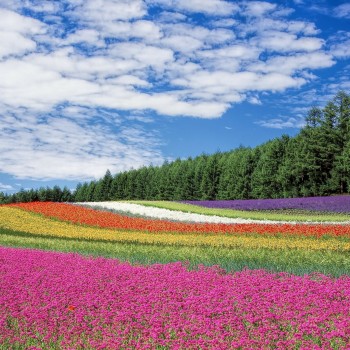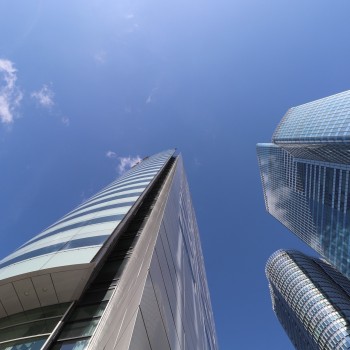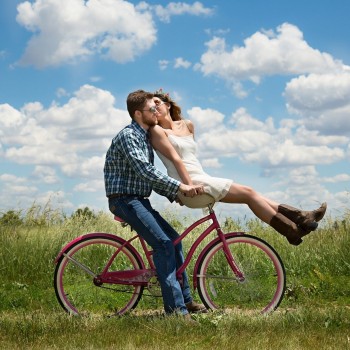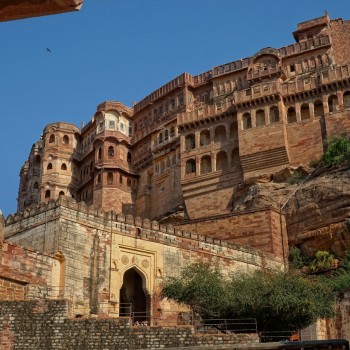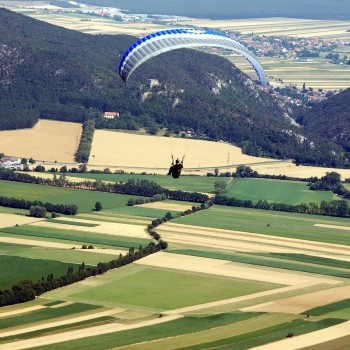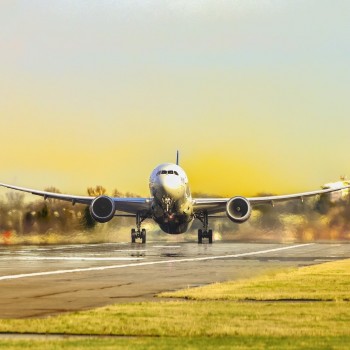Austria
Austria
Capital city description
Vienna is the capital and largest city in Austria. It is the most populous city in the country. About one-quarter of Austria’s population lives in this city. Vienna is one of the most progressive cities in Europe. The systematically functioning transportation network, the modernity of design used in the planning of living spaces, the height of education and cultural level, and the living conditions make the city a perfect city for both travel and life. Vienna’s economy is based on industry, trade, and tourism.
Almost half of Austria’s economy is based on economic activities in Vienna. The main industry branches are machinery, electrical appliances, chemicals, and metal production. The international trade fair, held twice a year in Vienna, provides essential contributions to the Austrian economy. Vienna is one of Europe’s most famous tourist cities globally. Furthermore, the city has everything you could expect from a trip to nature, history, culture, entertainment.
Climate
Austria has a temperate and alpine climate. Weather conditions vary only slightly across the country; the lowland regions in the north and east have more continental-influenced conditions with colder winters and hotter summers with moderate precipitation throughout the year. In summer, the daytime temperature is warm, with an average maximum temperature of 26.5 degrees Celsius (79.7°F) in July in Vienna. Nights are often much cooler. The amount of rain during summer can vary depending on location.
Spring: March to May
Summer: June to August
Autumn: September to November
Winter: December to February
Languages spoken
Almost all of Austria’s population speaks German, making it a practical lingua franca and official language. In addition, Austro-Bavarian is another German-language widely spoken across the country except for the federal-state of Vorarlberg and some areas of Tyrol’s Reutte District.
Fun/Fascinating Facts
- Austria is home to many famous composers worldwide like Franz Liszt, Mozart, Strauss, Schoenburg, Josef Haydn, and Franz Schubert. Classical and orchestral music is still a big deal in the country.
- Austria is an entirely landlocked county and has boundaries and borders, an impressive eight countries such as Germany, Czech Republic (Czechia), Slovakia, Hungary, Slovenia, Italy, Liechtenstein, and Switzerland.
- Vienna was home to a famous Viennese psychiatrist Sigmund Freud, the founder of modern psychoanalysis.
- The Austrian flag is one of the oldest globally; it comprises three horizontal stripes, alternating red, white, and red.
- Austria has the oldest zoo in the world. Opened on July 31, 1752, the Tiergarten Schönbrunn is the oldest continually operating zoo in Austria. It is located on the grounds of the Schönbrunn Palace in Vienna. This zoo is regarded as a scientifically administered zoo where the primary purpose is to conserve species and create awareness about the need for such conservation.
Unique Customs/Traditions
- Cafes are an essential part of the daily life of the Austrians, especially of the residents of Vienna. Undoubtedly, for the communities of this great city to go and have a coffee in these traditional places is a custom that already takes many decades. It is a moment of relaxation and relaxation, in which while reading or having a pleasant conversation, enjoy exquisite traditional pastries and take different preparations with coffee.
- The Austrians are considered very educated and punctual throughout the world, so it is more important than ever to be punctual when you have a meeting with a person from this country.
- The concept of family is one of the most significant traditions for Austrians because the family is the heart of society. Families in Austria are usually small and close-knit. In Austria, people enjoy family life, especially on weekends where they share outdoor activities. The family dinner is a daily meeting that could not be suspended for any reason.
- Christkindlmärkte is referred to as street markets that sell Christmas ornaments, cookies, and other things related to Christmas. Visiting one of the many Christkindlmärkte (Christmas markets) in Austria is a popular tradition during the four weeks of Advent.
- The Wiener Wuerstelstand is a long-standing tradition. These street-side booths serve fast and inexpensive snacks during a night out, including a great variety of sausages.
- The Austrian traditional and national costumes, called Tracht, are often worn on holidays and business days. The costume includes a blouse with wooden buttons and edelweiss patterns. Locals also wear different coats and dresses in traditional green and red colors. Such clothes are made of natural materials.
Popular universities
| Name | Description | |
|---|---|---|
| University of Vienna | Founded in 1365, The University of Vienna is a modern and large institution. It is the oldest university in the German-speaking world and one of the largest in Central Europe, located in Vienna, Austria. Research and teaching comprise a wide range of faculties: from Catholic and Protestant Theology, Law, Business and Economics, Computer Science, Historical and Cultural Studies, Philological and Cultural Studies, Philosophy and Educational Sciences, Psychology, Social Sciences, Mathematics, Physics, Chemistry to Earth Sciences, Geography, Astronomy, Life Sciences, Translation Studies, Sports Sciences, and Molecular Biology as well as Teacher education. | |
| TU Wien | TU Wien university is one of the major universities in Vienna, Austria, founded in 1815. The university's teaching and research focus on engineering, computer science, and natural sciences. The university finds high international and domestic recognition in teaching and research, and it is a highly esteemed partner of innovation-oriented enterprises. | |
| University of Innsbruck | Founded in 1669, the University of Innsbruck is a public university in Innsbruck, the capital of the Austrian federal state of Tyrol. It is the largest research and education institution in western Austria. The University of Innsbruck has sixteen faculties. The primary research areas are physics, Alpine spaceman and environment, cultural conflicts, scientific computing, and molecular biosciences. | |
| Graz University of Technology | Founded in 1811, the Graz University of Technology is Austria's oldest science and technology research and educational institute. The Graz University of Technology offers bachelor's and master's study programs across all technology and natural science disciplines. Doctoral training is organized in English-speaking postgraduate schools. The Graz University of Technology renders top performances in its five areas of excellence - the Fields of Expertise. | |
| Johannes Kepler University | The Johannes Kepler University (JKU) Linz is a public institution of higher education located in Linz, the capital of Upper Austria. Johannes Kepler University Linz offers bachelor's, master's, diploma, and doctoral degrees in business, engineering, law, science, social sciences, and medicine. Johannes Kepler University (JKU) Linz boasts future-oriented academic degree programs, excellence in teaching and research, numerous partnerships in Austria and abroad, and a unique campus with park-like grounds. | |
| Alpen-Adria-Universität Klagenfurt | Alpen-Adria-Universität Klagenfurt (University of Klagenfurt) is a non-profit public higher education institution located in the suburban setting of the small city of Klagenfurt Carinthia established in 1970. It is a federal Austrian research university and the most extensive research and higher education institution in Carinthia. Alpen-Adria-Universität Klagenfurt (AAU) offers courses and programs leading to officially recognized higher education degrees such as pre-bachelor degrees (i.e., certificates, diplomas, associate or foundation), bachelor degrees, master degrees, doctorate degrees in several areas of study. | |
| the University of Salzburg | Established in 1622, the University of Salzburg, also known as the Paris Lodron University of Salzburg (Paris-Lodron-Universität Salzburg, PLUS), is an Austrian public university in Salzburg municipality, Salzburg state. The university was founded by and named after Prince Archbishop Paris Lodron. The University of Salzburg offers bachelor's degree course programs in several areas of study law. The master's degree course "European Union Studies" is a new feature combining disciplines such as politics, history, and law. | |
| Medical University of Graz | The Medical University of Graz is a public medical university located in Graz, Austria, founded in 2004. The Medical University of Graz portfolio is characterized by innovative and practice-oriented education, forward-thinking and excellent research, and first-class and personalized patient care. The Medical University of Graz offers courses and programs such as medicine, dentistry, nursing science, and doctoral programs. Research Interdisciplinary work on new therapy and treatment options is underway in various innovative research projects. | |
Festivals & Events

New Year's Concert
Date: 1st January
Classical music's most widespread live event happens every year on 1st January before noon when Vienna Philharmonic Orchestra plays in Musikverein's famous classical pieces such as Blue Danube Waltz or Radetzky March. There are two other concerts with the same program on 30th and 31st December, but this one is the most popular. It is broadcasted via live TV worldwide.

Vienna Ice World
Date: 24th January - 8th February
The Vienna Ice World is one of the biggest open-air artificial ice rinks globally, held from December until February. The City Hall Square transforms into a giant ice rink and thrills ice-skating enthusiasts of every age. The idyllically ornamented facade of City Hall forms the fairytale backdrop for Vienna Ice World. An 8,300 m² ice landscape provides entertaining winter enjoyment for skating fans of every age.
A unique experience is the Sky Rink, a skating terrace on the first floor with a 120 meter-long ramp. Both families and sporty visitors striving to act on the ice will get their money's worth and a delightful adventure.

Vienna Coffee Festival
Date: January
Vienna Coffee Festival, a celebration of coffee and lifestyle, is held annually in Ottakringer Brewery with coffee tastings, presentations, talks, and music programs. In January, the festival invites visitors on a journey of discovery through the world of coffee. Everything in the unique place revolves around the excellent preparation and tasting of unusual coffee and roasts – accompanied by good food, drinks, and music. Professional baristas will prepare espresso, filter coffee, or cold brew using various methods and impress with their creative milk foam decorations.

Vienna Opera Ball
Date: Second week of February
Vienna Opera Ball is a part of the Vienna Fasching celebrations held annually, on the last Thursday of the Carnival season at the State Opera House. Over 5,000 guests gather in Vienna Staatsoper to waltz, dance, and enjoy a glamourous evening. Vienna Opera Ball is a globally famous event, and people worldwide are looking forward to attending it.

Vinyl & Music Festival
Date: First weekend of March
Vinyl & Music Festival is held in March in Ottakringer Brewery. There are various concerts, a Vinyl records fair, an art exhibition, and a straight-up great place to come for food and drink. The international gig posters with an exhibition of works and various poster artists showcasing and selling their art and delivering live music from different genres from singer/songwriters to rock bands during the festival.

Wiener Festwochen (Vienna Festival)
Date: May and June
The Wiener Festwochen (Vienna Festival) is a cultural festival in Vienna every year for five or six weeks in May and June. The first Wiener Festwochen celebration was established in 1951 when the four Allies occupied Vienna. Nowadays, it is one of the most famous cultural events in Europe and incorporates all sorts of disciplines in events over the five weeks.
The Wiener Festwochen is an open-air event with free admission held in the square in front of Vienna’s City Hall.

Vienna Blues Spring
Date: March to April
The Vienna Blues Spring festival is held in the iconic Der Reigen venue, presents many great concerts and gigs of blues bands and individual musicians. Numerous musicians fill various venues across Vienna with all genre variations during Vienna Blues Spring from March 20 to April 30.

Donauinselfest
Date: July
Donauinselfest is a tremendous open-air free music festival with countless performances and local performers with few international guests, held on Donauinsel, a small long artificial island on the Danube River.
Donauinselfest is the largest open-air music festival globally, draws over 3 million visitors over three days.

Life Ball
Date: May (date varies)
The Life Ball is one of the most significant events in Vienna and one of the most significant AIDS charity events globally. The Ball events start with a red carpet reception in front of the Vienna City Hall, the Ball inside the hall, and a night-long party in the Volksgarten.
The Life Ball is focused on the AIDS campaign and the people suffering from it. It is, in fact, one of the world’s largest charity and star-studded events. One event feature is a fashion show typically organized by a famous designer or designer with well-known models and personalities on the catwalk.

Vienna Christmas Markets
Date: December
Vienna Christmas Markets, also referred to as Advent markets, occur in the weeks before Christmas. In Austria, Christkind brings presents on Christmas Day, not Santa Claus.
Like so many other events, the main Christkindlmarkt in Vienna is held in front of the city hall. The giant Christmas tree in front of the stalls selling traditional goods, mulled wine, and local delicacies is one of Vienna's most famous views. The City Hall Christmas Market is usually open every day from mid-November to Christmas Eve.
Attractions / Top Sights

Hofburg Imperial Palace
When to visit: Late summer through mid-autumn
One of Vienna's most spectacular attractions is the Hofburg Imperial Palace, located in the center of Vienna. This complex served as the official royal residence of the Habsburgs until the First World War. The palace was built in stages, adding on places like the stables, the library, and the Spanish Riding School as power and money accumulated for the Habsburgs.
The entire Hofburg complex occupies 59 acres encompassing 19 courtyards and 2,600 rooms with many stunning squares and gardens. From the entrance to the Michaelerplatz, visitors can tour several onsite museums and even get a look at former royal apartments as well as the glittering Imperial Silver Collection.

Schonbrunn Palace
When to visit: Late summer through mid-autumn
When to visit: https://whc.unesco.org/en/list/786
Schonbrunn Palace is one of the central tourist attractions in Vienna. The palace was built between 1696 and 1712 at the request of Emperor Leopold I and turned into the imperial summer palace by Maria Theresa. The Palace Park offers a lot of attractions, such as the Privy Garden, the oldest zoo in the world, a maze and labyrinth, and a marble summerhouse situated on top of a 60-meter high hill.
In 1996, Schonbrunn Palace was inscribed in UNESCO World Cultural Heritage Sites due to its stunning gardens as a unique Baroque ensemble and its palace's importance.

Historic Centre of the City of Salzburg (Salzburg Altstadt)
When to visit: May to September
When to visit: https://www.salzburg-altstadt.at/en
The Historic Centre of the City of Salzburg, also known as the Altstadt, is a district of Salzburg, Austria, recognized as a UNESCO World Heritage Site since 1996. It contains a Medieval and Baroque ensemble of buildings unique globally and attracts millions of visitors yearly. As the residence of Prince Archbishops, Salzburg was a spiritual center from the earliest days of Christianity in Europe.
The Benedictine Abbey of St. Peter, in the heart of the Altstadt (Old Town), was founded by St. Rupert in AD 690 and served as the residence of the Archbishops until the early 1100s, gives highlights to the Historic Centre of the City of Salzburg along with the stunning cemetery and its catacombs, instantly recognizable as a filming site for The Sound of Music.

Hochosterwitz Castle
When to visit: Between April and November
When to visit: https://www.burg-hochosterwitz.com/en/
The medieval Hochosterwitz Castle is considered one of Austria's most remarkable medieval castles and has been regarded as the perfection of a medieval castle since the Bronze Age.
The castle boasts 14 gates, each designed to protect its inhabitants. An incredible inclined railway brings visitors to the castle, home to a church designed using marble and boasting an abundance of sculptures. The armory, featuring an array of 14th-century weapons, is still open to the public.

Grossglockner Alpine Road
When to visit: May to October
When to visit: https://www.grossglockner.at/gg/en/index
Grossglockner Alpine Road is a scenic road that takes you to the Kaiser Franz Josefs Höhe Visitor Center. From there, you get an unobstructed view of Austria's highest mountain, the Grossglockner, with 3,798 meters, which is Austria's tallest mountain. The Grossglockner Alpine Road is a fantastic toll road, but the fabulous high alpine scenery more than makes up for the expenses.
The road became safer, more expansive, and more comfortable. Exhibitions and museums, huts and mountain inns, visitor centers, and information points focus on the diverse mountain world with its fauna and flora in the middle of the Hohe Tauern National Park. The road is typically open from May to the end of October.

Krimml Waterfalls
When to visit: In Spring
The Krimml Waterfalls (Krimmler Wasserfälle) were Austria's most famous and most remarkable waterfalls as it thundered forcefully over four major drops on the Krimmler Ache. The Krimmler Ache plunges 380 meters in three tremendous falls and makes for an excellent excursion from the nearby village of Krimml. At an altitude of 1,076 meters, Krimml-perched high above the Salzachtal in a wooded valley-is a wonderful place to stop for a few days if you're into hiking.

Seefeld in Tyrol
When to visit: May to September
Seefeld is an important cross-country skiing center with terrain perfect for beginner and intermediate skiers. It has played host several times to the Olympic Nordic disciplines– in 1964, 1976, and 2012. Located on a spectacular nature reserve, it is ideal for cold-weather sports and warm-weather strolls and hiking.
As one of the ‘Best the Alps’ group members – an alliance of 12 world-famous tourist resorts in the European Alps – the region boasts a firmly established position based on lifestyle, culture, sport, events and flourishing tourism industry. Offering the most luxuriously upscale accommodation, Seefeld is your relaxing resort getaway.

Swarovski Crystal Worlds
When to visit: May to September
When to visit: https://kristallwelten.swarovski.com/Content.Node/wattens/Visitor_information.en.html
Swarovski Crystal Worlds in Wattens has been one of the tops of Austria’s most-visited attractions since its opening in 1995. Visitors from every corner of the world have walked through these stunning outlets; Swarovski Crystal Worlds boasts 17 separate “crystal chambers,” including a giant crystal dome and an “infinity mirror room” featuring a revolving chandelier. And outside, a cloud made out of 800,000 crystals rivals the starry night sky.
André Heller created Swarovski Crystal Worlds as a gift to employees, collectors, customers, and partners to celebrate in 1995 the 100th anniversary of the founding of Swarovski. Since then, it has become a place where people from many different backgrounds come to marvel at the dazzling crystalline world.

Hallstatt
When to visit: May to October
Hallstatt, a small town in the Salzkammergut region, is home to the world’s most ancient salt mines. The wealth accumulated from the salt industry transformed it into a charming baroque city, with pastel-colored houses casting shimmering reflections onto the looking-glass lake and with lofty mountains rearing up on all sides.
A UNESCO World Heritage Site, Hallstatt, with its charming panoramic and exquisite views and one of the unique tourist attractions in Vienna, draws numerous visitors yearly

Melk Abbey-Benedictine Abbey
When to visit: May to October
Melk Abbey is one of the most well-known monasteries in the world. Located high up on the cliff, overlooking the calming waters of the Danube river, rests the peaceful Benedictine Abbey.
Melk Abbey was built as a Roman fortress in the 11th century; the fortress was converted into a monastery by the ruling Babenberg family. The family then donated the monastery to the Benedictine monks. The Abbey has been continuously a center of worship for over 900 years. The impressive spiritual center has become one of the most outstanding examples of Baroque architecture and the flourishing musical and liberal arts of its time.



